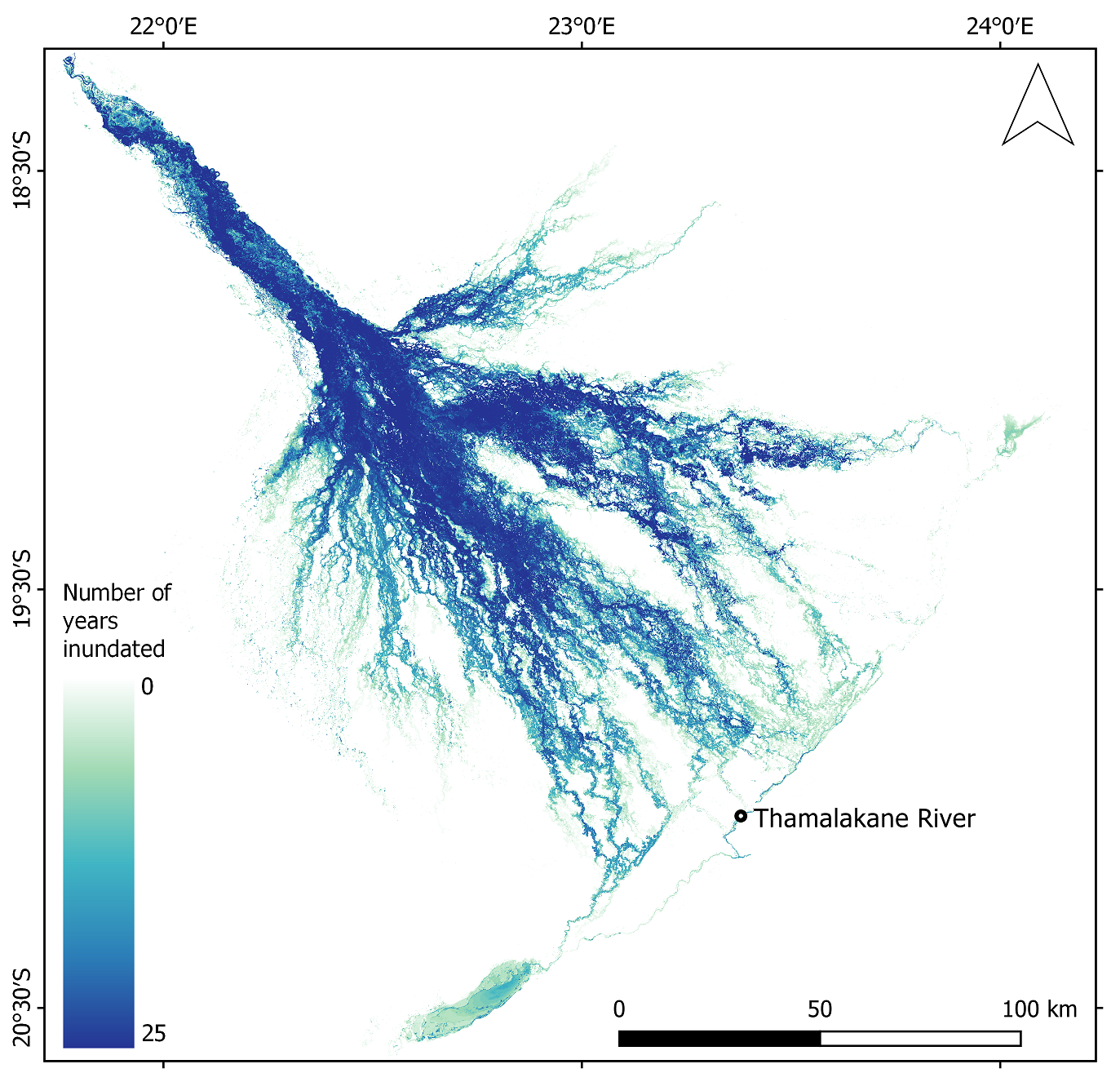Preprint
Technical Note
Automated Inundation History Mapping over Large Areas using Landsat and Google Earth Engine
Altmetrics
Downloads
363
Views
384
Comments
0
A peer-reviewed article of this preprint also exists.
supplementary.zip (81.36MB )
This version is not peer-reviewed
Submitted:
02 March 2020
Posted:
03 March 2020
You are already at the latest version
Alerts
Abstract
Accurate inundation maps for flooded wetlands and rivers are a critical resource for their management and conservation. In this paper we automate a method (thresholding of the short-wave infrared band) for classifying inundation, using Landsat imagery and Google Earth Engine. We demonstrate the method in the Okavango Delta, northern Botswana, a complex case study due to the spectral overlap between inundated areas covered with aquatic vegetation and dryland vegetation classes on satellite imagery. Inundation classifications in the Okavango Delta have predominately been implemented on broad spatial resolution images. We present the longest time series to date (1990-2019) of inundation maps at high spatial resolution (30m) for the Okavango Delta. We validated the maps using image-based and in situ data accuracy assessments, with accuracy ranging from 91.5 - 98.1%. Use of Landsat imagery resulted in consistently lower estimates of inundation extent than previous studies, likely due to the increased number of mixed pixels that occur when using broad spatial resolution imagery, which can lead to overestimations of the size of inundated areas. We provide the inundation maps and Google Earth Engine code for public use.

Keywords:
Subject: Environmental and Earth Sciences - Environmental Science
Copyright: This open access article is published under a Creative Commons CC BY 4.0 license, which permit the free download, distribution, and reuse, provided that the author and preprint are cited in any reuse.
MDPI Initiatives
Important Links
© 2024 MDPI (Basel, Switzerland) unless otherwise stated






